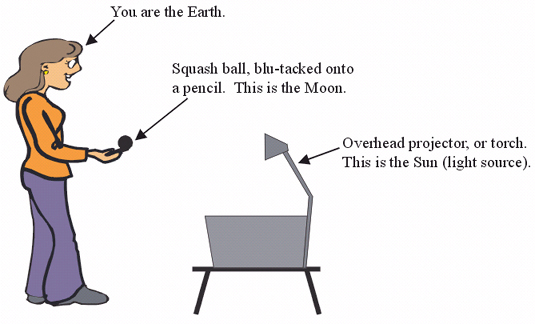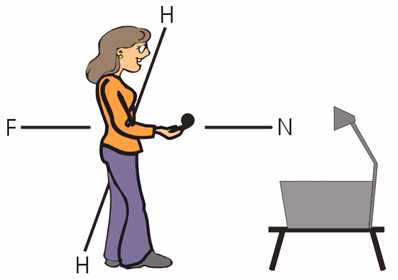Modelling phases of the Moon
This task is about the different phases of the Moon.
How to do this task

- Use the equipment you have been given to model the different phases of the Moon.
- The diagram below gives you an idea of how to set this up.

Once you have set up your model, revolve the Moon around you (the Earth) to demonstrate the following phases of the Moon:
- A full Moon
- A new Moon
- A half Moon
- A crescent Moon


